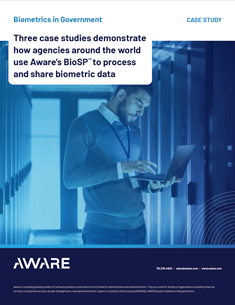The Future of Remote Identity Verification and How It Helps Citizens
March 1, 2023 | 4 minute read
The Future of Remote Identity Verification and How It Helps Citizens
March 1, 2023 | 4 minute read
Remote identity proofing is a means of confirming a person’s stated identity from a remote location. It’s a way to be sure that the person applying for a service or account, or requesting access to a location, is who they say they are, and are authorized to proceed.
Remote identity proofing is mostly used today by agencies to identify applicants for government services. But a secure and privacy-respecting method of remote identity proofing could have many useful applications in the private sector as well, such as executing financial transactions, opening an account, or applying for a mortgage. It could be used for hiring purposes by a company with a geographically scattered workforce, or by airlines to remotely check-in passengers getting ready to travel.
Why Do We Need Remote Identity Verification?
Organizations need to verify identity to prevent identity fraud, manage risk, and reduce exploitation. Government, financial, medical, and legal services all need to verify a user’s identity too. That’s why we have ID cards. We use them to prove who we are to access these services.
One problem with ID cards, however, is that they usually require someone to inspect the physical ID card in person. What if we live in a remote location far away from a government service center? What if we need to open a bank account but the nearby bank is closed? Visiting a physical location to verify our identity in person is inconvenient, at best, and impossible at worst.
That’s where remote identity verification comes in. It allows organizations to verify a person’s identity online so that we don’t need to go to a physical location in person. We can verify our identity from home, which lets us access services from home. No traveling. No waiting in line.
Identity Verification is the Key to Combatting Fraud
As technological advances continue to move forward rapidly, it is equally important that cybersecurity efforts keep up. As more and more services go mobile, the ability to verify a user’s identity is placed at more risk. Conventional authentication methods such as passwords are increasingly out of date, and do not do a good enough job protecting users from identity theft. Passwords, in particular, are increasingly vulnerable to cybercriminals, and it’s vital for both businesses and federal agencies to protect themselves and their users from these attacks.
As identity verification continues to go remote, a more secure method must be introduced to more accurately tie a person’s claimed identity with their actual identity. This is particularly true when it comes to travel, which involves people moving across borders repeatedly, day after day. Both travelers and businesses involved with this industry are susceptible to identity fraud and other scams originating from false personal and financial information.
For example, most travelers use credit or debit cards during their travels. Financial information of travelers can be easily misused once they have shared it with a retailer for making an online or in-store purchase. Stolen personal information and identity documents can be used for acquiring all sorts of fraudulent purchases. Starting from hotel check-ins to shopping for your loved ones, advanced identity verification solutions can solve both the ease of transactions, as well as protecting your data.
Adding Biometrics to the Identity Verification Solution
An ID document, even a real one, is not enough to verify an individual. You have to make sure the document belongs to the person presenting it. Biometric technology provides organizations with a method to do this remotely, both increasing security and convenience.
Biometrics are a strong alternative to passwords and other existing authentication methods because they cannot be stolen or guessed. Biometrics take advantage of what is unique about each of us: our physical characteristics. Because our faces or voices cannot be stolen, biometrics are inherently more secure against identity theft and fraud.
Modern biometrics also employ a process called “liveness detection” to protect against impostors looking to open or gain access to an account or service using a mask, photo or video. They don’t require organizations or users to acquire specific hardware or devices either. The truth is that extremely secure facial and voice recognition can be performed simply using the cameras and microphones found in today’s smartphones, laptops and tablets.
In a time where technology is moving faster than the speed of light and people demand faster, more efficient and safe ways of verifying who they are, Aware has the latest in remote identity verification and authentication technology that fits a myriad of use cases in both the commercial and government markets. If you would like to learn more about Aware’s solutions, visit www.aware.com.
